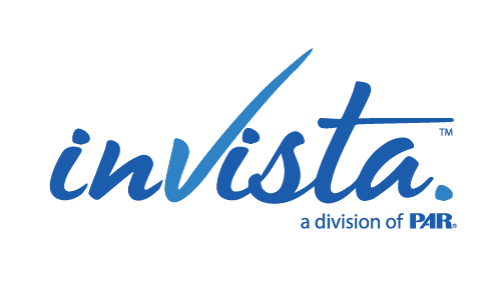Much like a bad first date might damage the possibilities for a second one, inefficient onboarding may impact a new employee’s chances of becoming an effective and efficient member of your team.
Effective onboarding can do wonders. According to a Glassdoor analysis, it raises productivity by 70% and employee retention by 82%. Conversely, firms with poor management may see higher number of new employees leaving within the first 90 days.
It’s important for the onboarding process to be given top priority—putting in the extra time and effort can help you create great employees. Good onboarding sets the tone for an employee’s future at your company and greatly affects their productivity, engagement, and retention.
Let’s discuss why onboarding matters and how managers can create a positive and productive experience.
Why is efficient onboarding important?
The first few days at a new job can feel isolating. This is where you have the opportunity to ensure a smooth transition through an effective onboarding process. Companies invest in onboarding for the following reasons:
- Boosts employee retention: A well-organized onboarding program will help lower turnover rates. New hires are more likely to stay long term if they feel encouraged and understand their role in the organization.
- Enhances productivity: Onboarding provides new hires with the tools, knowledge, and resources needed to contribute effectively from day one. This leads to quicker ramp-up times and higher productivity levels.
- Improves employee engagement: Those who undergo onboarding are more likely to be in touch with the goals and corporate culture. This kind of engagement makes people feel like they fit in and encourages them to do their best.
- Ensures compliance and understanding: Onboarding is an opportunity to ensure that new employees understand company policies, procedures, and compliance requirements, reducing the risk of future issues.
- Fosters positive workplace relationships: Introducing new employees to their team and helping them build relationships early on can create a supportive work environment, encouraging collaboration and teamwork.
10 tips for a positive onboarding experience
Gallup conducted a study that showed only 12% of workers thought their organization did an excellent job with onboarding. Those same employees were almost three times more likely to say they had the best job possible. Overall, only 29% of new employees thought they were ready and had the help they needed to do well in their new jobs.
So, what can you do differently to change that? Depending on your organization and its resources, you can combine different approaches and methods to deliver different parts of an onboarding program.
Here are a few tips to create a positive onboarding experience.
- Assign a mentor or buddy
Pair new employees with a mentor or a buddy who can provide guidance, answer questions, and offer support. This relationship can help fresh hires navigate the new environment more comfortably.
- Prepare before day one
Have everything ready for the new hire’s first day. This includes their workspace, necessary equipment, access to systems, and a detailed agenda for their first week. A smooth start sets a positive tone.
- Get the paperwork out of the way
Giving your new employees administrative jobs to do ahead of time, like filling out HR paperwork, will keep their first day from being spent filling out forms.
- Give out a welcome package
Provide a welcome package to make new hires feel appreciated and valued. Include items that reflect your company culture, such as branded mugs or mouse pads, or get creative with treats like cookies with your logo. Sending these packages as soon as the offer is accepted sets a positive tone.
- Make the first day exciting
Ensure the first day is both informative and enjoyable. Set up their workspace with necessary materials, arrange a welcome lunch with coworkers, and send a company-wide email introducing the new hire. Consider giving a small gift and ensure the day includes engaging activities beyond paperwork and orientation lectures.
- Personalize the experience
Tailor the onboarding process to each new employee’s role and background. Recognize their skills and experiences and show how they align with the company’s goals.
- Be flexible
Although having a structured onboarding plan is important, it’s equally crucial to remain flexible. If a new hire cannot attend in-person onboarding, be prepared with remote options. Adjust the schedule if needed to provide breaks after intensive training sessions.
- Introduce company culture and values
At the start of the onboarding process, talk about your company’s purpose, vision, and values. As they are new in the company, you should help them understand how the company works and how they fit into it.
- Set clear expectations and goals
Outline what is expected of new hires in terms of performance, behavior, and milestones. Setting clear goals helps them understand their role and what success looks like.
- Educate on company programs
Provide information on employee resource groups, benefits enrollment, and other company programs. Highlighting these resources can enhance their understanding of the positive culture within your organization.
- Discuss and plan for career growth
Initiate conversations about career development early and frequently. Discuss growth opportunities and career planning to show new hires that you are invested in their long-term success.
- Foster a sense of belonging
Cultivate an environment where new hires feel like they belong. Show interest in them as individuals and emphasize their value to the team. Organize social activities or team-building exercises to help them integrate smoothly into the company culture.
- Check in often
Regularly check in with new hires throughout onboarding to gather feedback on what’s working and what could be improved. Real-time insights can help you adjust and enhance the onboarding experience.
- Arrange key stakeholder meet and greets
Schedule meetings for new hires with colleagues from different departments. This will help them understand various aspects of the business and promote a culture of openness and high engagement.
- Incorporate job shadowing
Allow new hires to shadow different employees across various departments. This gives them a better view of the business and clarifies how various company departments collaborate. It also makes it easier for them to meet and build relationships with coworkers outside their local team.
Conclusion
Effective onboarding is not a checklist you have to complete. It is an opportunity to make a positive impression on new hires. Managers who commit time and energy to structured, personalized, and supportive onboarding do more than make new employees feel good, it turns them into active and engaged members of the team, boosting the company’s overall success and growth.
InVista can help streamline your hiring process. Learn more about our offerings.


Recent Comments